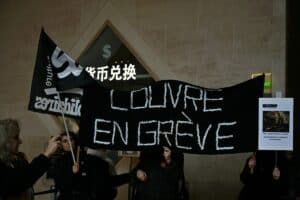The way regulator dealt with Eskom tariffs ‘not ideal’, court hears.

Energy regulator Nersa made some astonishing concessions on Wednesday during the court hearing to have its rejection of Eskom’s latest tariff application reviewed and set aside.
Judge Jody Kollapen hopes to make a ruling in the matter next week. If Eskom succeeds, the court will compel Nersa to process the rejected application for tariffs for the year starting 1 April 2022 in terms of the existing multi-year tariff determination methodology (MYPDM). Nersa is expected to then immediately publish Eskom’s application for public comment.
Moneyweb has learnt that Eskom applied for a tariff increase of about 20%, which includes amounts clawed back in relations to under-recovery in previous years as well as earlier court rulings in favour of Eskom.
ALSO READ: Eskom wants 20% more next year
Advocate Patrick Ellis SC on behalf of Nersa maintained that the latest version of the MYPDM has lapsed and admitted after being questioned by Kollapen, that Nersa has left a vacuum by not approving a new methodology timeously.
He however asked the court to allow Nersa to order Eskom to submit a revised tariff application in accordance with three principles Nersa adopted this week namely:
- Distinguishing between Eskom’s different activities: namely generation, transmission and distribution,
- Distinguishing between the way consumers use electricity, for example for consumption during peak-time only; baseload which is consistent consumption day and night; and mid-merit consumption which is adjustable during the day.
- Using a merit order dispatch approach (least cost first determination to set tariffs for each type of load), i.e. using the generation plant that operates at lowest cost, first.
Representing Eskom, Advocate Matthew Chaskalson SC pointed out that Nersa has not yet communicated this decision to Eskom and it has no detail about how it should prepare a tariff application with these principles.
Chaskalson described the principles as “amorphous” and confirmed a proposition by Kollapen that “it can be interpreted differently by 10 different licensees.”
According to Eskom it is legally obliged to give National Treasury and the local government association Salga 40 days to study its tariff application before submission to Nersa and, taking that into account, there is simply not enough time to prepare a new application and have Nersa process it before the March 15 deadline to table the tariffs in parliament.
ALSO READ: SA pays high price for Eskom chaos
Eskom maintains it needs at least nine months to prepare the application and Nersa needs a further six months to publish it, consult stakeholders and make a determination.
Ellis said if Eskom’s tariffs are merely increased without any structural changes, there is no need to consult with National Treasury and Salga, which prompted Kollapen to point out that the whole purpose of the new principles seems to be to induce structural change.
Kollapen asked if no structural change is envisaged, whether the existing methodology cannot be used.
Ellis said he cannot answer that question.
Kollapen asked Ellis whether the new principles, even “if Eskom got it today” will provide sufficient clarity for it to prepare an application, as opposed to the methodology that consists of 40 pages with a clear formula and detailed technical requirements.
Nersa, however, expects Eskom to merely “repackage” the rejected application, which it maintains does not trigger such consultation.
On behalf of Nersa, Ellis argued that the existing methodology is inappropriate, because it does not take into account the unbundling of Eskom and changes in the electricity supply industry. He said it would therefore be irrational and unlawful of Nersa to rely on that methodology to determine Eskom’s tariffs.
ALSO READ: Why Nersa wants an overhaul of Eskom tariffs
Following questions from Kollapen, Ellis also conceded that Nersa has failed in its obligation to put a (new) methodology in place. He said that is why Nersa has made the proposal that Eskom follows the new principles “to tide over the failure (by Nersa) to produce a new methodology.”
Kollapen pointed out that Nersa only rejected the Eskom application in September, citing the “lapsed” methodology and asked why the regulator failed to raise this point earlier. Eskom submitted the application in June and even met with Nersa about it as early as March.
Ellis conceded that “in a perfect world” that should have been the case and if Nersa firmly rejected it earlier, “we would not have had to sit around these computers today (for the virtual court hearing). The way Nersa dealt with the matter “is not ideal”, it could have rejected Eskom’s application earlier and developed a new methodology in time, but “that is crying over spilt milk” now and a new tariff determination must be made, he said.
He argued that Nersa can extend the validity of the current tariffs beyond 31 March next year and denied that it is a matter of “major catastrophe” as Chaskalson stated. According to Chaskalson Eskom would be left without any valid tariff unless the court grants its application and this would result in “catastrophic prejudice” for the whole country as Eskom would be without any revenue.
Following accusations by Eskom that Nersa is continuously changing its position by at first referring to a change in methodology and then apologising and “clarifying” that it is only the principles underlying the application of the methodology that will be changing and also apologising for a mistaken impression that the new principles will take effect before 1 April next year, in time for the new tariff determination, Ellis further conceded that Nersa’s pronouncements “did more to confuse the situation that to clarify it”.
This article first appeared on Moneyweb and was republished with permission. Read the original article here.






